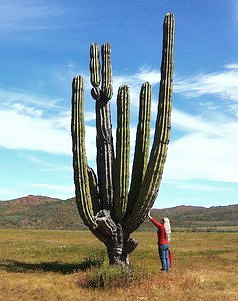Cacti...
While I am out of town, Gabrielle from Amazing Science Discoveries has decided to do a guest blog for me. I hope you enjoy it!
Long Live, the Cacti!
Have you ever wondered how those lumps of thorny cacti thrive despite the waterless and scorching conditions of the desert?
Let’s inspect how well the cactus adapts to survive in the harsh conditions of sandy wastelands where only few plants live.
If you take a close look at the structure of a cactus plant, you will notice that its leaves have shrunk to the point that in some species of cactus, the leaves are nonexistent. This allows the plant to prevent loss of water. If there is more surface area that is exposed to the sun, then the faster that the stored water evaporates from the cactus. Thus, this spine-covered hardy plant has evolved to keep as much of its water from evaporating away from the plant. Its tiny to non-existent leaves reduces its total surface area that is exposed to the sun. Think of the peculiar spines as modified leaves – they drip moisture droplets (when it is available) down the roots.
As for the thick bulbous stem (if you think about it, a cactus is nearly 90% stem!), it accounts for the primary water storage of the cactus. Most of the weight of the cactus plant is due to the stem. The storage capacity of cactus stems is unbelievable. A mature saguaro in the desert can store up to 200 gallons of water when it rains! In addition, the stem is covered by a waxy substance to seal the moisture in and thus control water loss.
The roots of cacti also help greatly to allow the plant to survive under intense heat and drought. Cactus roots spread horizontally. They spread out widely and not vertically, meaning they form shallow roots that do not penetrate deep into the soil. This gives the plant the ability to soak up water quickly through the roots, if there is rainfall. If the roots have spread widely enough, then there are “more” roots to absorb what little water is available. There are also cases of cactus plants that develop new roots rapidly if there is rain. Some cactus plants also possess very large taproots (an example of a taproot is a carrot). Taproots that grow larger than the entire plant above the ground are seen in the Atacama Desert, one of the driest places in the whole world. The huge taproots serve as water storage for cacti in those areas.
In short, the cactus is designed in such a way that it resists drying out. It also maximizes water storage when an occasional source of water is present in its immediate environment. Amazing, isn’t it?
For more easy and fun science facts, projects, and activities like these that are perfect for your grade schooler, be sure to check out “The Amazing Science Discovery Series” at http://www.amazingsciencediscovery.com




